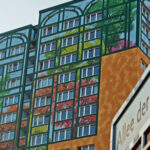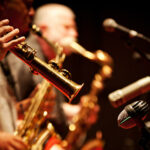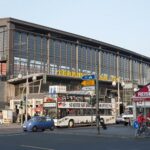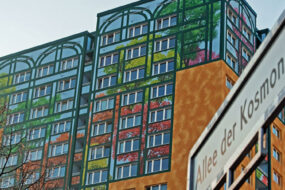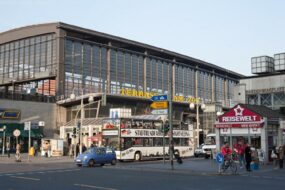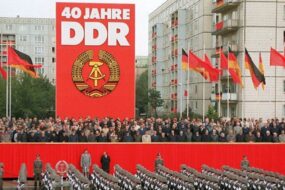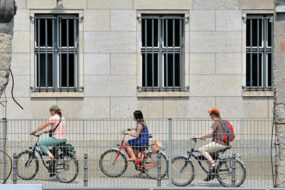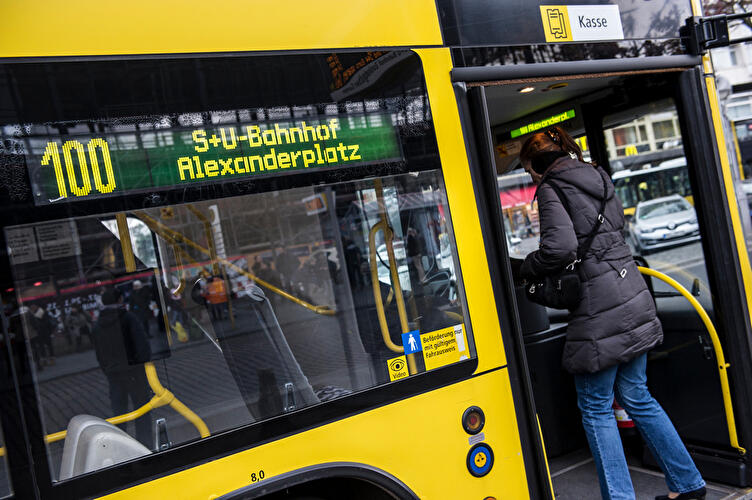
Berlin’s public bus line 100 offers an affordable and convenient way to explore the city’s most iconic landmarks, with no need for an expensive guided tour. This route, which runs from Zoologischer Garten railway station to Alexanderplatz, covers a range of must-see sights in about an hour. All you need is a standard AB ticket and a bit of time to soak in the city’s atmosphere. Here’s a guide to the main stops along the way.
Stop 1: Kaiser Wilhelm Memorial Church
Your journey begins at the historic Bahnhof Zoo, famously featured in Christiane F.’s book Wir Kinder vom Bahnhof Zoo. Today, the station is quieter since it lost its status as a main-line station in 2006. From here, you can see the Kaiser Wilhelm Memorial Church, a neo-Romanesque building erected between 1891 and 1895. Partially destroyed in World War II, the church remains a poignant symbol of peace. Nearby, Breitscheidplatz is a lively square featuring a distinctive fountain and is bordered by landmarks such as the Waldorf Astoria Hotel and Bikini Berlin.
Stop 2: Elephant Gate
As the bus continues, you’ll spot the magnificent Elephant Gate, one of the entrances to the Berlin Zoological Garden. Rebuilt in 1984 as an exact replica of its original 1899 design, this gate is a real eye-catcher. Just steps away, you’ll find the Aquarium Berlin, home to an impressive variety of aquatic species, amphibians, reptiles, and insects.
Stop 3: House of the World’s Cultures
In the heart of Tiergarten, you’ll see the House of the World’s Cultures, known for its unique architecture. Opened in 1957, it has hosted countless exhibitions and events. Close by, the Carillon, a bell tower with 68 bells, adds to the cultural richness of the area.
Stop 4: Brandenburg Gate
Next, you’ll arrive at Berlin’s most famous monument, the Brandenburg Gate. This iconic landmark, symbolizing German unity, is beautifully illuminated at night and offers a great photo opportunity.
Stop 5: Unter den Linden
The bus then moves onto Unter den Linden, Berlin’s renowned boulevard. Along this stretch, you’ll pass significant sites such as the Russian Embassy, Berlin Cathedral, and Lustgarten. At the boulevard’s end stands the grand equestrian statue of King Frederick the Great, one of the most important 19th-century monuments.
Stop 6: Humboldt University
Continuing along Unter den Linden, you’ll see the Humboldt University, housed in an impressive building constructed between 1748 and 1766. The university began its teaching activities in 1810 and remains a central pillar of Berlin’s intellectual life.
Stop 7: Bebelplatz
Opposite Humboldt University is Bebelplatz, the site of the infamous Nazi book burning in 1933. The memorial “Sunken Library” by Micha Ullmann, visible through a glass plate in the pavement, commemorates this dark moment in history.
Stop 8: St. Hedwig’s Cathedral
Also located on Bebelplatz is St. Hedwig’s Cathedral, the second building of the planned Forum Fridericianum, and today, the seat of the archbishop of Berlin.
Stop 9: Neue Wache
Next to the Zeughaus, which now houses the German Historical Museum, stands the Neue Wache. Built between 1816 and 1818, this small but significant building has been Germany’s central memorial for the victims of war and tyranny since 1993.
Stop 10: Zeughaus
The Zeughaus, or armory, is one of the oldest and most beautiful buildings on Unter den Linden. Completed around 1706, it now hosts the permanent exhibition of the German Historical Museum.
Stop 11: Schloßbrücke
The bus crosses the Schloßbrücke, a bridge designed by Karl Friedrich Schinkel. With its historic railings and eight marble figures, it’s one of Berlin’s most impressive bridges. From here, the Lustgarten and Altes Museum are just a short stroll away.
Stop 12: Old Museum
The Old Museum, built in 1830, is a striking example of neoclassical architecture. Its 18 mighty columns and granite bowl in front make it one of Berlin’s most recognizable landmarks.
Stop 13: Berlin Cathedral
Berlin Cathedral, another must-see, was heavily damaged during World War II but has since been restored. The church’s ornate architecture and Hohenzollern crypt are notable highlights.
Stop 14: Marx-Engels-Forum
At the northwest corner of Schlossplatz, you will find Marx-Engels-Forum, featuring statues of Karl Marx and Friedrich Engels, the founders of modern socialism. This area is a relic of Berlin’s GDR era.
Stop 15: Neptune Fountain
A stone’s throw from the Marx-Engels-Forum, the Neo-Baroque Neptune Fountain, inspired by Rome’s famous fountains, adds a touch of grandeur to the cityscape.
Stop 16: St. Mary’s Church
St. Mary’s Church, dating back to the 13th century, offers a glimpse into medieval Berlin. Inside, the Danse Macabre wall painting is one of Berlin’s oldest and most significant artworks.
Stop 17: Fernsehturm
As your bus tour nears its end, you’ll spot the Berlin TV Tower, Germany’s tallest structure at 368 meters. On clear days, the observation deck provides stunning panoramic views of the city.
Stop 18: Alexanderplatz
Finally, you reach Alexanderplatz, a bustling square with shops, restaurants, and the World Clock. If you want to explore more, feel free to hop on and off the bus, with the next Bus 100 arriving just minutes later.
By the end of this budget-friendly bus tour, you’ll have experienced some of Berlin’s most iconic landmarks without breaking the bank.
